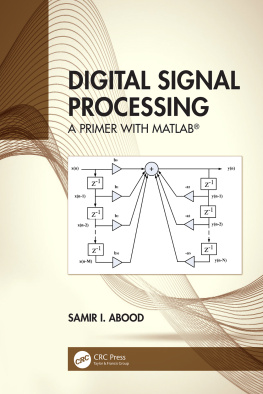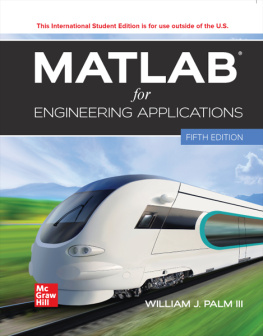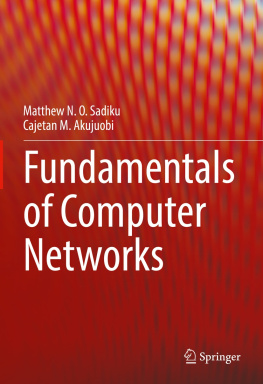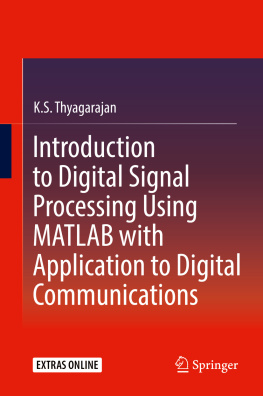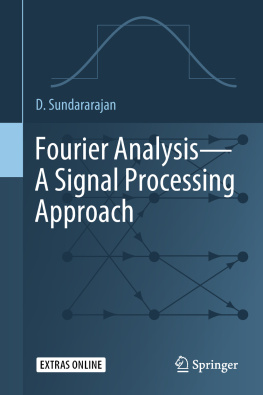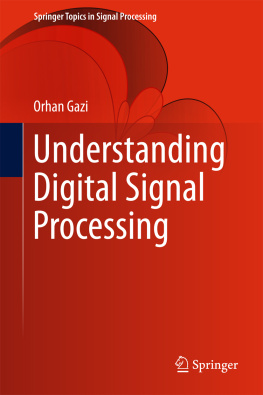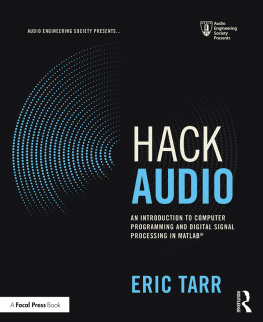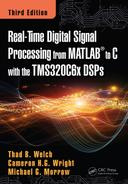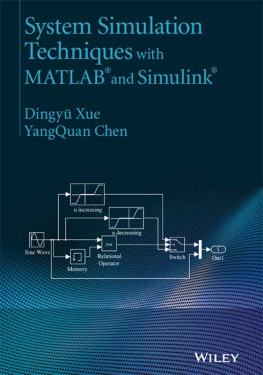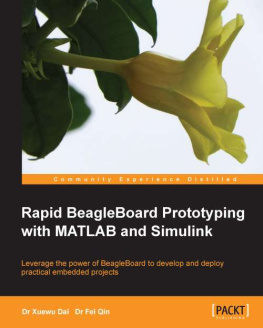Digital Signal Processing
A Primer With MATLAB
Dedicated to
My great parents, who never stop giving of themselves in countless ways,
My beloved brothers and sisters;
My dearest wife, who offered me unconditional love with the light of hope and support;
My beloved kids: Daniah, and Mustafa, whom I can't force myself to stop loving;
To all my family, the symbol of love and giving.
Digital Signal Processing
A Primer With MATLAB
Samir I. Abood

MATLAB is a trademark of The MathWorks, Inc. and is used with permission. The MathWorks does not warrant the accuracy of the text or exercises in this book. This books use or discussion of MATLAB software or related products does not constitute endorsement or sponsorship by The MathWorks of a particular pedagogical approach or particular use of the MATLAB software.
CRC Press
Taylor & Francis Group
6000 Broken Sound Parkway NW, Suite 300
Boca Raton, FL 33487-2742
2020 by Taylor & Francis Group, LLC
CRC Press is an imprint of Taylor & Francis Group, an Informa business
No claim to original U.S. Government works
Printed on acid-free paper
This book contains information obtained from authentic and highly regarded sources. Reasonable efforts have been made to publish reliable data and information, but the author and publisher cannot assume responsibility for the validity of all materials or the consequences of their use. The authors and publishers have attempted to trace the copyright holders of all material reproduced in this publication and apologize to copyright holders if permission to publish in this form has not been obtained. If any copyright material has not been acknowledged please write and let us know so we may rectify in any future reprint.
Except as permitted under U.S. Copyright Law, no part of this book may be reprinted, reproduced, transmitted, or utilized in any form by any electronic, mechanical, or other means, now known or hereafter invented, including photocopying, microfilming, and recording, or in any information storage or retrieval system, without written permission from the publishers.
For permission to photocopy or use material electronically from this work, please access www.copyright.com (www.copyright.com/) or contact the Copyright Clearance Center, Inc. (CCC), 222 Rosewood Drive, Danvers, MA 01923, 978-750-8400. CCC is a not-for-profit organization that provides licenses and registration for a variety of users. For organizations that have been granted a photocopy license by the CCC, a separate system of payment has been arranged.
Trademark Notice: Product or corporate names may be trademarks or registered trademarks, and are used only for identification and explanation without intent to infringe.
Visit the Taylor & Francis Web site at
http://www.taylorandfrancis.com
and the CRC Press Web site at
http://www.crcpress.com
Contents
I appreciate the suggestions and comments from several reviewers, including assistance from Prof. Zainab Ibrahim/University of Baghdad/Electrical Engineering Department, Dr. Muna Fayyadh/Colorado Technical University, and special thanks to Nafisa Islam/Prairie View A&M University Their frank and positive criticisms led to considerable improvement of this work.
Finally, I express my profound gratitude to my wife and children, without whose cooperation this project would have been challenging if not impossible. We appreciate feedback from students, professors, and other users of this book. I can be reached at sameeralrifaee74@ieee.org sabood@student.pvamu.edu and sameeralrifaee74@gmail.com.
Digital signal processing (DSP) denotes various techniques for improving the accuracy and reliability of digital communications. The philosophy behind DSP is quite complicated. Digital signal processing converts signals from an analog form into digital data that can then be analyzed and consequently turned back into an analog signal with improved quality after the DSP system has finished its work.
In DSP, the engineers usually study digital signals in one of the following domains: time domains, frequency domains, spatial domains, and wavelet domains.
The applications of DSP include digital image processing, audio signal processing, audio compression, speech processing, video compression, digital communications, digital synthesizers, speech recognition radar systems, ultrasound and sonar, financial signal processing, seismology, and biomedicine.
The DSP algorithms can be run on general-purpose computers and implemented using software code program, and Simulink also can implement by using hardware as modern technologies for digital signal processing include more powerful general-purpose controllers, microprocessors, stream processors, and field-programmable gate arrays (FPGAs).
The typical processing approach in the time domain is an improvement of the input signal through a method called filtering. In digital filters there are two types of filter with and without feedback. There are various ways to characterize filters: as a linear filter, causal filter, time-invariant filter, stable filter, finite impulse response (FIR) filter, and infinite impulse response (IIR) filter.
The signals are converted from the time domain to the frequency domain usually through the use of the Fourier Transform. The Fourier Transform, also called spectrum or spectral analysis, converts the time information into a magnitude and phase component of each frequency. The engineer needs to study the spectrum to control which frequencies are present in the input signal and which are missing.
Digital filters originate in both IIR and FIR types. While FIR filters are always stable, IIR filters have feedback loops that may become unstable and oscillate. Digital filters can be analyzed through the z-transform, which provides a tool for analyzing stability issues of digital IIR filters. Also, it is analogous to the analyse and designs analog IIR filters represent the Laplace transform
The book offers a good understanding of a signals behavior and its applications. The book begins with the study of signals and systems. Then it presents their applications in the different types of configurations shown in lucid detail. The book presents the relation of signals and systems. This book is intended for college students, both in community colleges and universities.
This book is organized into 16 chapters. With a short review of the basic concept of continuous and discrete signals in .
. The chapter also elaborates on the method of decimation-in-frequency and in time.
In introduces pole-zero stability, difference equations and transfer function, and the stability of DSP systems.
presents the implementation of IIR digital filters and their properties and the design of a notch filter by MATLAB.
deals with the implementation of Finite Impulse Response (FIR), and it is design.
deals with the digital filter design, the realization of digital filters, and direction-form I realization.
Earlier experience using the MATLAB program is not needed since the author highly recommends that the reader studies this material in conjunction with the MATLAB Student Version. and Appendix C of this text provides a practical introduction to MATLAB.
MATLAB is a registered trademark of The MathWorks, Inc. For product information, please contact:
The MathWorks, Inc.
3 Apple Hill Drive

